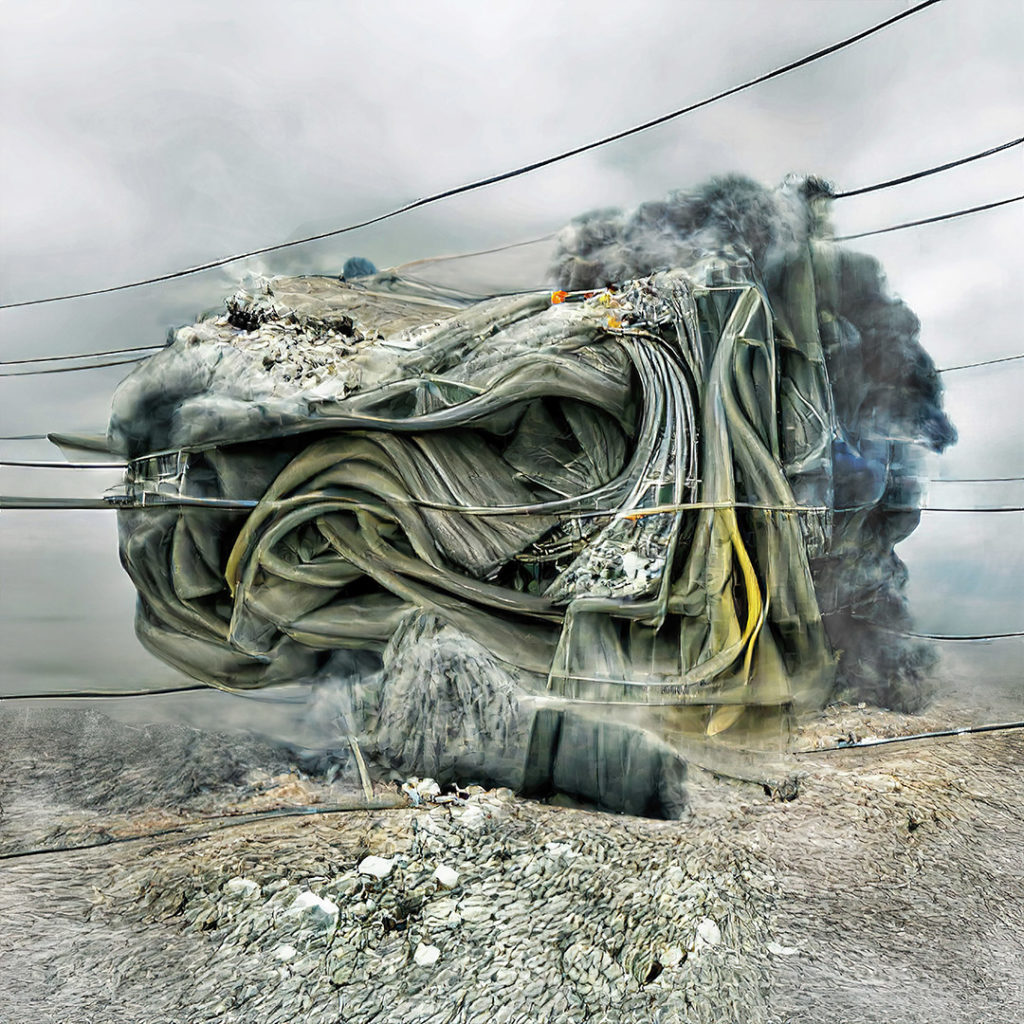Grandiloquences de l’autonomie

L’installation serait autonome, elle n’attendrait pas le public et sans doute, en son absence, se passera-t-il des événements sans témoin. Le public observe quelque chose qui existerait sans lui et qui n’aurait pas besoin de lui. Il deviendrait alors l’observateur de phénomène étranger.
Cette application d’une logique déliée de l’absolu à l’œuvre d’art prend à revers la conception esthétique classique où l’œuvre s’adresse, se destine, est dépendante d’un public parce qu’elle est un appareillage sensible. Sans doute faut-il y voir une réponse à l’omniprésence (dans le domaine culturel compris) de la communication et de la médiation où tout est considéré selon un point de vue relationnel et une réplique, en art, de la recherche de l’absolu qui a été celle du réalisme et du matérialisme spéculatifs. En il va aussi, de manière plus lointaine, mais aussi plus profonde, de la crise écologique transformant certains artistes culturalistes (en particulier dans le postcinéma) en des artistes ontologiques : quelque chose ne dépend pas de nous, mais nous dépend d’elle (la Terre et d’autres hyperobjets).
Cette autonomie est le plus souvent envisagée selon une conception vitaliste. Est autonome ce qui trouve les conditions de son développement en soi (Aristote). D’où la floraison de champignons, pieuvres, moisissures, cristallisations de toute sorte, et de formes liquides, coulantes, envahissantes, débordantes, dégradées.
Parfois, cette autonomie engage avec elle des questions politiques classiques. Être autonome c’est briser les chaînes de la causalité et pouvoir être libre.
Enfin, certaines œuvres plus subtiles mêlent les autonomies naturelles et technologiques et rendent indistincte la frontière entre les deux, rejouant sur la scène artistique la remise en cause en anthropologie de la séparation entre nature et culture.
Dès qu’il s’agit d’autonomie, on hérite d’un discours grandiloquent de l’absolu. Quelque chose est sans nous et nous sommes une espèce si fragile, si dépendante, si limitée. L’autonomie de la chose devient un discours sur la finitude du sujet qui s’incarne dans la volonté démiurgique de l’artiste qui serait capable de créer des œuvres autonomes. Cette stratégie de la finitude humaine et de l’infinitude de ses productions est relativement classique, elle consiste à mettre en scène le drame d’une humanité à mi-chemin entre l’absolu et la mort, l’idéalité et la matière, le tout et le rien. Ces dialectiques restent des mises en scène qui agitent des distinctions tenues d’avance comme consistantes alors que tout l’enjeu réside dans le fait d’en déconstruire les généalogies pour en métaboliser autrement le caractère inextricable.
–
The installation would be autonomous, it would not wait for the public and undoubtedly, in its absence, will happen events without witness. The public observes something which would exist without him and which would not need him. He would then become the observer of a foreign phenomenon.
This application of a logic untied of the absolute to the work of art takes to reverse the classic aesthetic conception where the work addresses, is destined, is dependent on a public because it is a sensitive equipment. Undoubtedly it is necessary to see there an answer to the omnipresence (in the cultural domain included) of the communication and the mediation where everything is considered according to a relational point of view and a replica, in art, of the search of the absolute which was that of the realism and the speculative materialism. In it also goes, in a more distant way, but also more profound, of the ecological crisis transforming certain culturalist artists (in particular in the postcinema) in ontological artists: something does not depend on us, but we depend on it (the Earth and other hyperobjects).
This autonomy is most often envisaged according to a vitalist conception. Is autonomous what finds the conditions of its development in itself (Aristotle). Hence the flowering of mushrooms, octopuses, moulds, crystallizations of all kinds, and of liquid, flowing, invading, overflowing, degraded forms.
Sometimes, this autonomy engages with it classic political questions. To be autonomous is to break the chains of causality and to be free.
Finally, certain more subtle works mix natural and technological autonomies and make indistinct the border between the two, replaying on the artistic scene the questioning in anthropology of the separation between nature and culture.
As soon as it is a question of autonomy, we inherit a grandiloquent speech of the absolute. Something is without us and we are such a fragile, dependent, limited species. The autonomy of the thing becomes a discourse on the finitude of the subject which is embodied in the demiurgic will of the artist who would be able to create autonomous works. This strategy of the human finitude and the infinitude of its productions is relatively classic, it consists in putting in scene the drama of a humanity to halfway between the absolute and the death, the ideality and the matter, the whole and the nothing. These dialectics remain stagings which agitate distinctions held in advance as consistent whereas all the stake resides in the fact of deconstructing the genealogies of it to metabolize otherwise the inextricable character of it.
